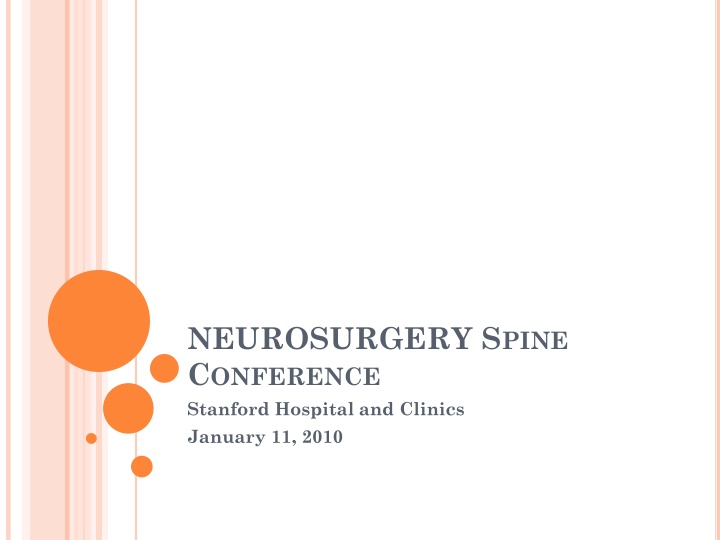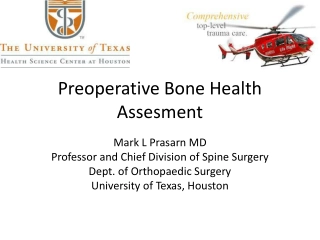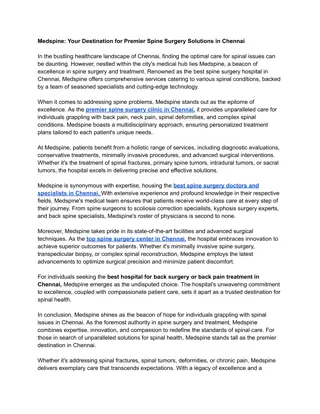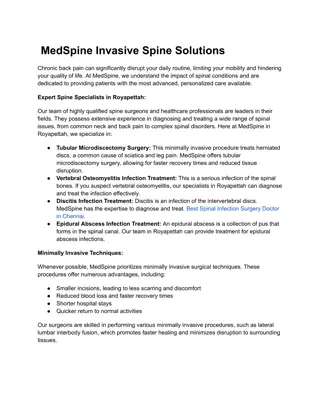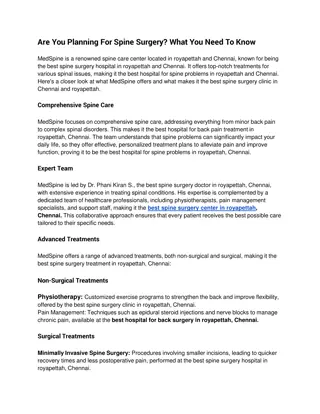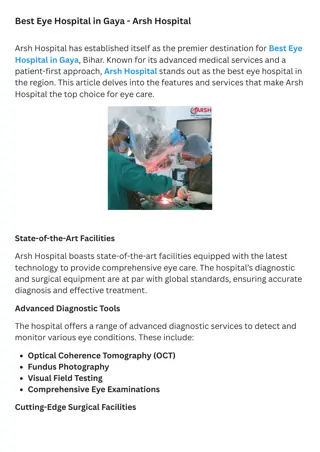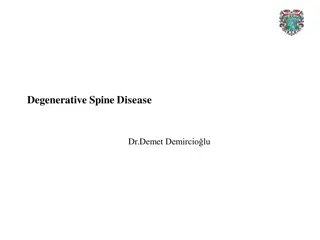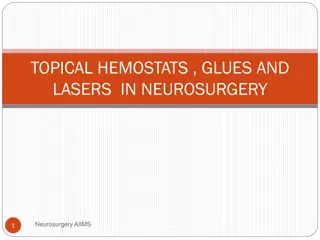Neurosurgery Spine Conference at Stanford Hospital January 11, 2010
Case #1 involves a 76-year-old female presenting with urinary retention, incontinence, and sudden lower extremity numbness. The diagnosis is an intra-medullary spinal tumor (Ependymoma) affecting adults. Case #2 features a 58-year-old female with right leg pain, weakness, and numbness, having a history of acoustic neuromas and lumbosacral plexus schwannomas.
Download Presentation

Please find below an Image/Link to download the presentation.
The content on the website is provided AS IS for your information and personal use only. It may not be sold, licensed, or shared on other websites without obtaining consent from the author.If you encounter any issues during the download, it is possible that the publisher has removed the file from their server.
You are allowed to download the files provided on this website for personal or commercial use, subject to the condition that they are used lawfully. All files are the property of their respective owners.
The content on the website is provided AS IS for your information and personal use only. It may not be sold, licensed, or shared on other websites without obtaining consent from the author.
E N D
Presentation Transcript
NEUROSURGERY SPINE CONFERENCE Stanford Hospital and Clinics January 11, 2010
CASE #1 HPI: JO is a 76 yo F w/ h/o urinary retention and incontinence with 3d onset mid-thoracic BP with sudden BLE numbness PMH: Urinary retention, osteoporosis PSH: Urethral Dilation, varicose vein stripping Meds: Vesicare, Reclast ALL: NKDA FHx: CAD SHx: Married, homemaker living in Bishop, CA. Denies tob/ETOH ROS: o/w neg
PHYSICAL EXAMINATION: VSS GCS 15, OX3 CN II-XII intact Motor Strength 5/5 Sensation intact, no Saddle Anesthesia Rectal tone normal DTR normal No clonus or babinski sign
DIAGNOSIS: Intramedullary Spinal Tumor: Ependymoma Most common intramedullary tumor in adults (60%) Cellular type - usually cervical, peak age 43, female, circumscribed, cystic, or hemorrhagic Myxopapillary type occurs in the conus or filum, peak age 28, male, may metastasize to lymph nodes, bone, or lung iso-T1; hyper-T2; enhances Astrocytoma Most common intramedullary tumor in children, cervical, peak age 21, low grade, frequently causes cyst/syrinx Fibrillary type Can cause scoliosis Enhances Hemangioblastoma 50% thoracic 40% cervical, peak age 30, associated with VHL Cystic with vascular nodule and have dilated feeding vessels Others oligodendrocytoma, ganglioglioma, schwanomma, met
CASE #2 HPI: 58 yo F w/ 6-7 mo h/o RLE pain, numbness and weakness PMH: bilat acoustic neuromas, lumbosacral plexus schwanommas ALL: Codeine Meds: Darvocet; Ramipril PSHx: T&A; Craniotomy for tumor, removal of PN schwanomma SHx: no tob; 6 cans of beers each week FHx: N/C ROS: bilat loss of hearing; difficulty walking; joint stiffness, muscle pain, leg pain
PHYSICAL EXAMINATION: VSS GCS 15, OX3 Deaf bilaterally and only communicates through written words Facial Asymmetry Left foot drop; weak R eversion Motor Strength L: IP 4; Q 4+; H 4+; TA 0; G 0 R: IP 4; Q 4+; H 4+; TA 4; G 4- Decreased sharp sensation RLE diffusely DTR: 1+ bilaterally
DIAGNOSIS: Intradural Extramedullary Tumor Nerve Sheath Tumor Most common spinal tumor (30%) Schwanommas are more common than neurofibromas Meningioma 25% of spinal tumors, peak age 40-60, female Usually in the thoracic spine, can be multiple Paraganglioma Rare, usually in the cauda equina, from accessory organs of the PNS Encapsulated, hemorrhagic and enhancing Epidermoid Dermoid Neurenteric Cyst Ventral to the cord Arachnoid Cyst Usually dorsal to the cord Met lung, breast, melanoma, lymphoma
EPIDURAL LESIONS: Met Breast, lung, prostate In children: Ewing s sarcoma, neuroblastoma Usually in the lower thoracic and lumbar spine Lytic-lung; blastic-breast, prostate
J Neurosurg Spine. 2009 Nov;11(5):591-9. Factors associated with progression-free survival and long-term neurological outcome after resection of intramedullary spinal cord tumors: analysis of 101 consecutive cases. Garc s-Ambrossi GL, McGirt MJ, Mehta VA, Sciubba DM, Witham TF, Bydon A, Wolinksy JP, Jallo GI, Gokaslan ZL. Department of Neurosurgery, Johns Hopkins School of Medicine, Baltimore, MD, USA. authors retrospectively reviewed 101 consecutive cases of IMSCT resection in adults and children at a single institution Neurological function and MR images were evaluated preoperatively, at discharge, 1 month after surgery, and every 6 months thereafter Pathological type included ependymoma in 51 cases, hemangioblastoma in 15, pilocytic astrocytoma in 16, WHO Grade II astrocytoma in 10, and malignant astrocytoma in 9 For all tumors, the intraoperative finding of a clear tumor plane of resection carries positive prognostic significance across all pathological types The incidence of acute perioperative neurological decline increases with patient age but will improve to baseline in nearly half of patients within 1 month A GTR should progression-free survival for astrocytoma
